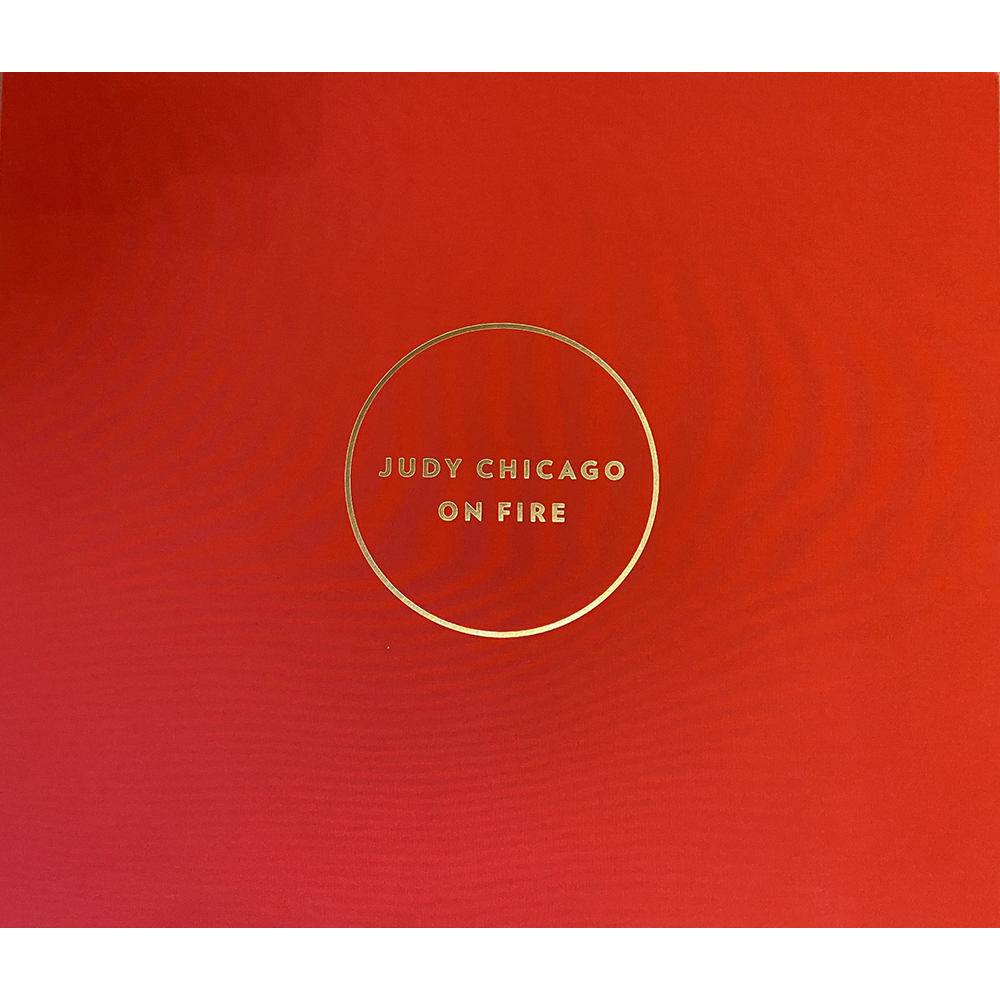Artwork Description
Judy Chicago – On Fire Suite Boxed Set
Dimensions: 20 x 24″ paper / 16 x 16″ plate
Year: 2009-12
Medium: two films, and twelve mixed media prints, box set
Edition: 10/10
Judy Chicago’s “On Fire” is a part of her “Atmospheres” series. In 1968, several years after she graduated from the MFA program at UCLA, Chicago had begun the series as an exercise. In the first iteration, she used smoke machines to cloak a Pasadena street in a shroud of ethereal white mist. “It softened everything,” she recalls of the vapor’s effects. “There was a moment when the smoke began to clear, but a haze lingered. And the whole world was feminized—if only for a moment.”
“Chicago, born Judy Cohen, was a key figure in California minimalism who came to prominence making brightly colored abstract geometric paintings and sculptures in the 1960s. By the end of the decade, her feminist politics led to a new identity (she began using the city of her birth as her last name) and new ways of creating and teaching art. In 1968, Chicago began working with fireworks and flares in site-specific interventions titled Atmospheres that momentarily “feminized” found environments. Collaborative performances followed, like that captured in Smoke Bodies, featuring painted female bodies and matching colored smoke plumes set against the stark desert landscape. The performers were students in the groundbreaking Feminist Art Program founded by Chicago in 1970, originally at California State College, Fresno, after she realized existing college art curricula were entirely shaped by male artists. In 1974, Chicago set off fireworks around the Oakland Art Museum grounds to ignite the outline of a massive butterfly, a celebration of the feminine. She then turned her attention to her most iconic project, The Dinner Party (1974−−79), which used “women’s arts” such as tapestry and other textile techniques and china painting to celebrate women’s histories. She did not return to fireworks until 2012, when she recreated her pyrotechnic butterfly at Pomona College in Claremont, California.” Smithsonian Institution
Unlike the actions of some of her male peers who would excavate and/or destroy landscapes to create their art, Chicago’s interventions in the natural world didn’t involve any destruction of the landscape. Rather, they softened it and highlighted its beauty. At times, the smoke acted like a curtain, slowly lifting to reveal the stunning landscape behind it. At others, it curled across the environment’s curves and grooves, emphasizing its elegant and varied contours.
In “On Fire,” a woman sits in the middle of burning flares that emit deep orange smoke. It is a reference to sati, an Indian ritual of immolation where a wife is burned along with her husband on his funeral pyre. In this image, however, the woman sits aside the flames and looks away from flames, reclaiming her power and choice.
Judy Chicago’s artworks are found in the permanent collections of the world’s top museums. Gloria Steinem, upon introducing her long time friend as she was being honored by the Hammer Museum, famously said she could define art history as before and after Judy Chicago. There are numerous monographs and books about Judy Chicago, including the most recent monograph published by National Museum of Women in the Arts. Art historians and curators can search the Judy Chicago Portal, which combines her archives at Harvard, Penn State, and National Museum of Women in the Arts. In 2020 Judy Chicago completed a widely acclaimed collaboration with Dior Couture in Paris, in which her Female Divine monumental sculpture was erected outside the Rodin Museum in Paris and housed her banners posing the question “What if Women Ruled the World?” Read more about why Dior invited her to collaborate with them.

